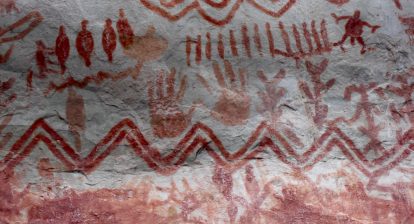The Earth’s crust is made up of tectonic plates (irregular-shaped pieces of solid rock ranging from a few hundred to thousands of kilometres in size), that move around due to the heat from inside the planet’s core. They have done this over the course of Earth’s entire history – shifting the continents that sit atop them as they do so. Over the course of our planet’s history the continents have occupied different parts of the globe due to this movement,
Now, for the first time, scientists have developed a continuous full-plate model of shifting tectonic plates spanning 1 billion years (Ga) to the present-day in this 40 second video. It shows the full extent of continental drift and the interactions of the plates with each other.
As you view the video you can see how the continents occupied completely different locations on the globe. As Michael Tetley said, “The Earth is incredibly dynamic. And although on a human timescale, things move in centimetres per year, continents have been everywhere through time,” he says. “And places like Antarctica that we see as a cold, icy, inhospitable place today was actually once quite a nice holiday destination at the equator.”
Plate tectonics impact everything on the planet including climate, tidal patterns, animal evolution and migrations, volcanic activity and even metal production. Studying them is crucial for scientists to understand life on Earth, its future habitability, as well as to search for mineral and metal resources (such as those for clean energy).
“This is how we view biological evolution, for example, and also climatic evolution,” explained Michael Tetley, one of the scientists involved in the research To Euro News. “All things that are tied to the tectonics. So understanding this base level process is hugely important for science.”
Plate tectonics are assessed by studying geological records, which requires studying material inside rock samples, as well as the magnetism that provides information on the position of the substrate in relation to its spin axis. For the purpose of this study the team chose the most suitable available models, integrating continental movements and their interactions along plate boundaries. The scientist paid particular attention to revising and improving the model for the Neoproterozoic to Cambrian (1,000 to 520 million years ago) eras, about which information has been scarce.
The team hopes that this study will help to better understand Earth’s ancient history and provide a basis for future studies.
Reference: Merdith, A.S., Williams, S.E., Collins, A.S., Tetley, M.G., Mulder, J.A., Blades, M.L., Young, A., Armistead, S.E., Cannon, J., Zahirovic, S. and Müller, R.D., 2020. Extending full-plate tectonic models into deep time: Linking the neoproterozoic and the phanerozoic. Earth-Science Reviews, p.103477.
The selected Optin Cat form doesn't exist.






